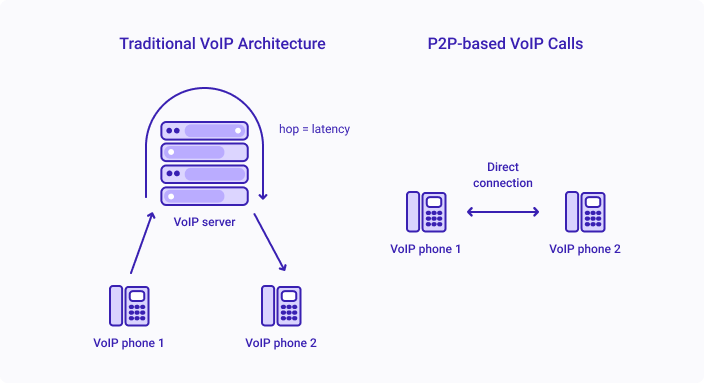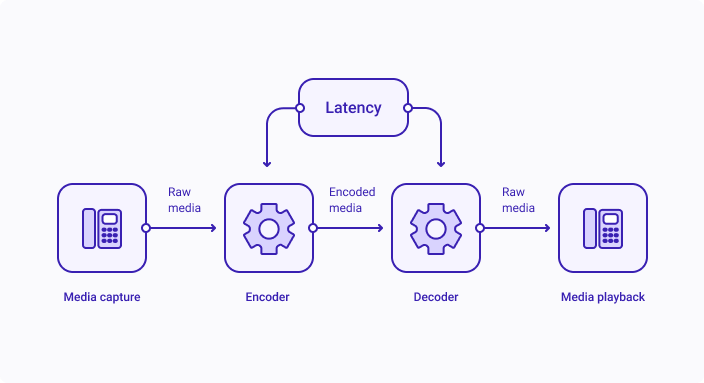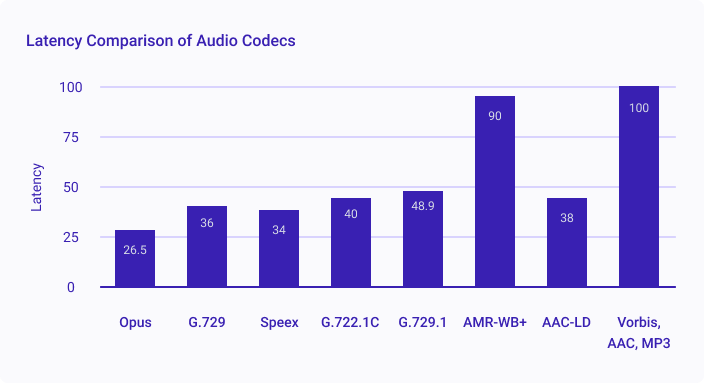VoIP providers minimize latency by supporting point-to-point SIP calls, operating a global POP network and maintaining modern codecs. Dip into our guide and choose your VoIP provider wisely.
VoIP latency characteristics produce an impact on the quality of service. Calls with latency exceeding 200 milliseconds detract from the interactive nature of real-time communications and provide a poor experience to users.
There are many factors that contribute latency to telephony sessions, including signal propagation, encoding and decoding, as well as routing. However, the design of the VoIP provider service exerts the largest impact. Providers choose how to route the VoIP call, establish points of presence, maintain codecs and routing infrastructure.
If you’re responsible for managing telephony services for your company, you’ll want to evaluate your provider’s latency characteristics. In this article, we pinpoint the key components to consider when choosing a VoIP provider.
If you’ve already chosen the right provider, share your experience in comments and help out our readers.
Does Your VoIP Provider Support Point-to-Point Calling?
Conventional providers route VoIP calls through their infrastructure. When data packets passing to and from the servers and routers that compose infrastructure, they experience latency. Each hop increases latency and reduces VoIP call quality.
Providers can eliminate these latency factors with point-to-point calling, otherwise known as P2P-based VoIP calling or P2P-SIP.
With P2P, the central servers that are involved in setting up a call are removed from the media path. The media goes directly from one VoIP phone to another instead of being routed through a provider’s infrastructure. Media that is routed peer-to-peer is invariably faster.

Note, if you want to build an audio or video conferencing app, P2P would not be a practical choice.
Are there POPs Near Your Customers?
When P2P is unavailable, media is routed across the VoIP provider network to the points of presence (POPs) that are nearest the call participants. The closer the POPs are to the participants, the less latency they will experience during a VoIP call.
To ensure low latency, VoIP providers spread POPs across many geographic regions. The larger the area covered by POPs, the more likely it is that they will be close to the call participants and the fewer VoIP issues they will face.
If VoIP providers establish POPs in a limited number of regions, their customers from outside those locations may experience latency problems. The same goes for VoIP providers that operate only one POP. They will never match the quality of service provided by competitors with many POPs.
For instance, Voximplant has POPs in the USA, Germany, Netherlands, Brazil, Singapore, Australia and Russia. Our POP network allows customers to make and receive VoIP calls across 200 countries without noticeable loss of quality.

Does your VoIP Provider Offer Low-Latency Codecs?
Codecs encode and decode media at each end of the call, adding latency. When a call is being set up, the endpoints and VoIP provider network negotiate the selection of one codec type from those they share in common.

Because each codec offers different latency characteristics, it’s important that the VoIP provider network supports a broad range of codecs, including those with low latency. This enables the negotiation process to select the codec offering the best latency and quality for network conditions.
Different codec algorithms have varying impacts on latency. For instance, Voximplant uses the Opus audio codec, which has a low algorithmic delay – 26.5 ms by default. Opus has the flexibility to reduce delay to as low as 5 ms by trading off quality or bitrate.
Let’s take a look at the latency introduced by different codecs.

Note, latency is among multiple call quality factors that can be influenced by the selection of a codec. In addition, codecs determine the amount of bandwidth required for the call and the fidelity of the audio. You should consider flexible codecs that can adapt to your network environment and minimize the bandwidth required.





